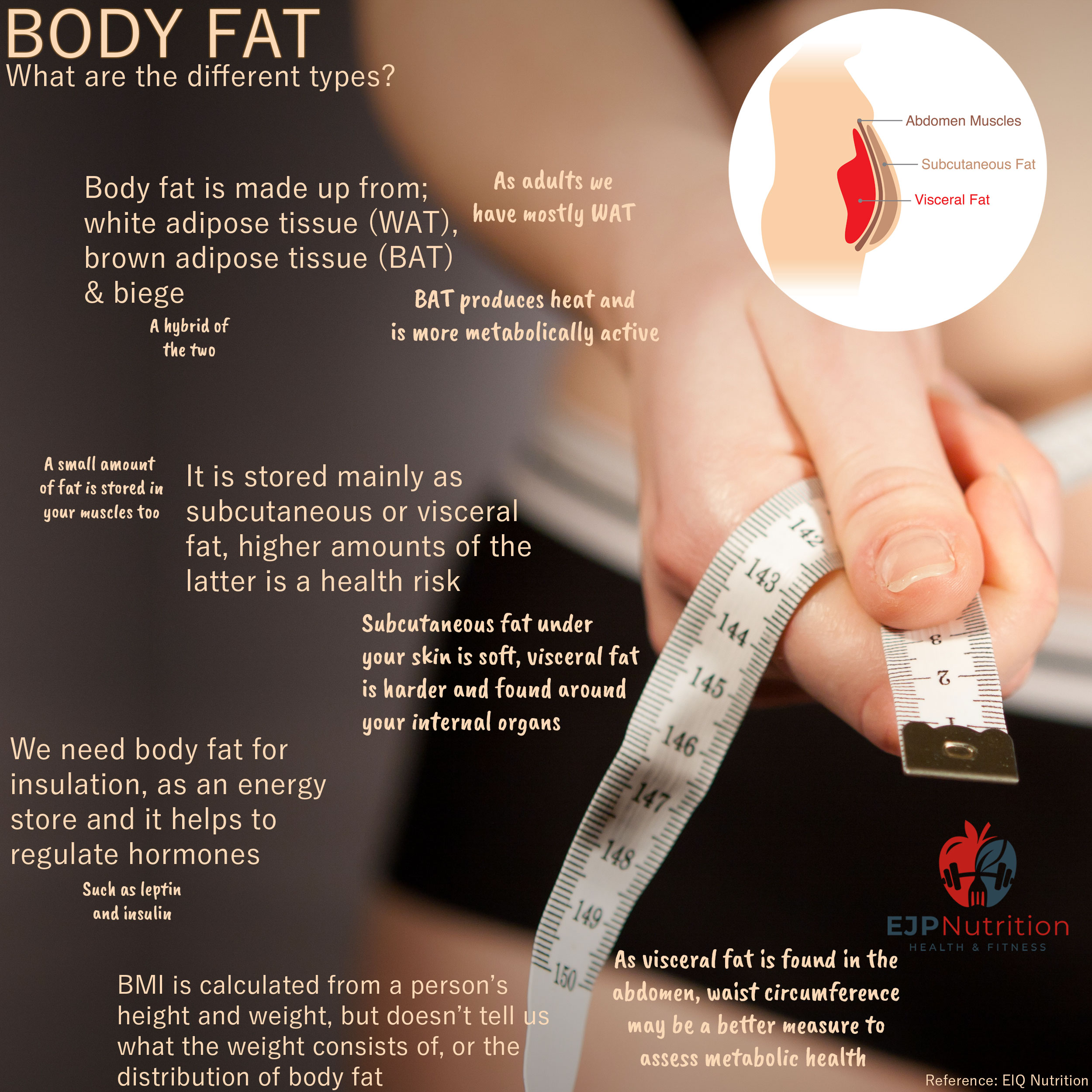When discussing body weight and nutrition or training there are two main areas of focus; muscle and body fat. Today we’re looking at body fat. When we consume excess calories (more than we expend) over a period of time this energy is stored as body fat. If our intake is less than our expenditure we lose fat.
We need a certain amount of body fat for health. For example being too lean can negatively effect reproductive hormones, for women especially. They need ~12% and men require ~3% (with some individual variation). Fat provides insulation so we don’t get cold and it’s an energy store too.
The most common type of fat for adults is white adipose tissue (WAT). It’s stored subcutaneously (under the skin) or viscerally (around organs). As well as being an energy store this fat influences the function of some hormones, such as leptin and insulin amongst others.
Brown adipose tissue (BAT) has more mitochondria (than white) and it produces heat. It’s more metabolically active. We have more BAT when we’re babies, to stay warm. However as adults we don’t have much. It can be gained from cold exposure, but not as a one-off, you’d need regular exposure. Beige fat is a hybrid between the two.
A person’s BMI is calculated from their overall height and weight. From that there are classifications; underweight, normal, overweight, and obese (I, II & III). BMI as a risk factor gets a lot of criticism, some of which is fair. At a population level it’s a quick and easy measure. But for an individual it doesn’t make any allowance for what makes up your weight; muscle, organs, bones, or potentially more importantly where fat is stored.
Waist circumference may be more useful than BMI for assessing metabolic risk levels, as the abdomen is where visceral fat is found. But with either of these measures, they are only a small part of a bigger picture. You can have metabolically healthy obesity. However while it is rare, it’s just one (of many) reasons why you shouldn’t assume someone’s health from their body weight.
References: EIQ Nutrition, Behnke 1974
(Reposted from Instagram)


